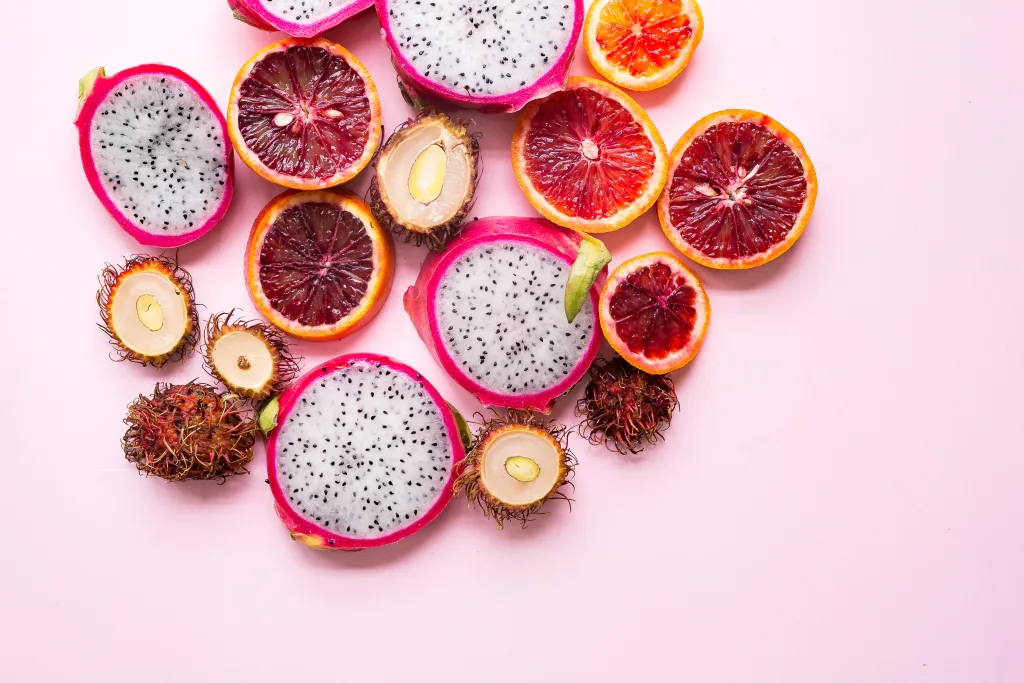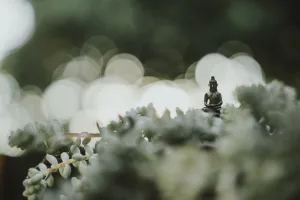Step into the serene and enchanting world of Japanese gardens. Experience a symphony of colors that dance gracefully among the carefully crafted landscapes. From vibrant hues that evoke energy and vitality to calm and harmonious tones that inspire tranquility, Japanese gardens boast a wide array of color schemes that capture the essence of nature’s beauty. Explore the captivating combinations of reds, whites, purples, and greens that transform these gardens into captivating works of art. Lose yourself in the contemplative tranquility that emanates from the soothing color palettes, and discover the secrets behind the prevalent color schemes that make Japanese gardens truly extraordinary. Japanese gardens are renowned for their serene beauty and meticulous design. Each element in a traditional Japanese garden is carefully chosen and placed to create a harmonious and balanced environment. One important aspect of these gardens is the use of color, which plays a significant role in conveying symbolism, evoking emotions, and enhancing the overall aesthetic appeal. In this article, we will delve into the understanding of traditional Japanese gardens and explore the significance of color in their design.

The Significance of Japanese Gardens
Japanese gardens hold deep cultural and historical significance in Japan. They are not merely ornamental spaces but are seen as places for spiritual reflection, meditation, and escape from the outside world. These gardens are designed to mimic the natural landscape, seeking to create a harmonious balance between human-made elements and nature.
Design Principles of Japanese Gardens
The design principles of Japanese gardens are rooted in traditional Japanese aesthetics and philosophy. They emphasize simplicity, asymmetry, and the concept of “wabi-sabi,” the appreciation of imperfection and transience. The elements in these gardens are deliberately arranged with great attention to detail, ensuring every aspect serves a purpose and contributes to the overall composition.
The Role of Color in Japanese Garden Design
Color holds immense importance in Japanese garden design, as it influences the mood, symbolism, and overall atmosphere of the space. The careful selection and arrangement of colors help create a sense of tranquility, balance, and harmony. Let us explore how different colors are incorporated into traditional Japanese gardens to achieve these desired effects.
Green as a Dominant Color
Green is undoubtedly the most prominent color in Japanese gardens. It represents vitality, freshness, and rejuvenation. The extensive use of various shades of green helps mimic the lushness of nature and create a soothing and calming ambiance.
Different shades of green are strategically chosen to achieve depth and visual interest. Darker greens, such as those found in evergreen trees like pine and cedar, provide a sense of stability and permanence. Lighter greens, like the delicate leaves of Japanese maple trees, offer a vibrant and refreshing touch. Moss, another essential element in Japanese gardens, adds texture and adds a vibrant shade of green.

Incorporation of Browns and Grays
While green dominates Japanese gardens, the inclusion of browns and grays is equally crucial in achieving visual balance. Natural materials like wood and stone are commonly used in garden structures such as fences, pathways, and lanterns.
The color brown represents earthiness and stability, grounding the dynamic green hues. It is often seen in wooden fences and benches, creating a warm and welcoming atmosphere. Gray, on the other hand, signifies simplicity, elegance, and maturity. Stones, gravel, and sculptures in gray tones punctuate the garden, providing subtle contrast and a sense of permanence.
Accent Colors in Japanese Gardens
In addition to the predominant green, Japanese gardens may incorporate accent colors to create focal points and add visual interest. These accent colors serve to highlight specific elements or evoke certain emotions within the space.
Common accent colors in Japanese gardens include shades of red, black, yellow, and purple. These colors are strategically used sparingly to maintain the overall sense of harmony. For example, red is often used in small details such as gate roofs or lanterns, symbolizing energy and strength. Black represents elegance and mystery and can be found in elements like bamboo fences or stone lanterns.
Situational use of bright colors, such as vibrant flowers or decorative ornaments, is also observed during specific seasonal events or cultural celebrations. These bursts of color add a lively and festive atmosphere to the garden.

Influence of the Seasons
The ever-changing seasons have a profound impact on the color schemes of Japanese gardens. Each season brings its own unique palette, inspiring the transformation of the garden throughout the year.
In spring, delicate blossoms of cherry and plum trees paint the garden with soft pinks and whites, symbolizing renewal and transience. Summer brings vibrant greens and colorful flowers like hydrangeas and irises, representing vitality and abundance. Autumn transforms the garden into a fiery spectacle with the warm hues of red, orange, and gold, as maple trees turn into vivid displays. Winter blankets the garden in tranquility, with monochromatic landscapes of snowy whites and grays.
Use of Red and Black
Red and black hold significant symbolism in Japanese garden design. Red is associated with strength, passion, and vitality. It is sparingly used to draw attention to specific elements and create focal points. Small red bridges, known as “torii,” are often seen in Japanese gardens, symbolizing the transition from the profane to the sacred.
Black, on the other hand, represents elegance, formality, and mystery. Black elements, like lacquered wooden fences or stone lanterns, evoke a sense of understated grandeur and sophistication. The contrast between the intense red and the subdued black adds depth and interest to the overall color scheme while maintaining balance and tranquility.
Water Elements in the Garden
Water features, such as ponds, streams, and waterfalls, are integral components of Japanese gardens. They symbolize purity, calmness, and the transient nature of life. Water elements not only create visual interest, but they also have a profound impact on the color scheme of the garden.
The reflective properties of water surfaces enhance the colors present in the garden, creating a mirror-like effect that adds depth and dimension. This effect is particularly pronounced when the water reflects the surrounding greenery and the vibrant hues of flowers.
Blue is the primary color associated with water, and it can be observed in various forms within the garden. From the deep blue of a koi pond to the flowing aquamarine shade of a cascading waterfall, blue elements contribute to the overall visual harmony and tranquility of the space.
Use of White and its Representation
White is a unique color in Japanese gardens, symbolizing purity, spirituality, and simplicity. It represents a state of enlightenment, offering a sense of peacefulness and calmness. White flowering plants, such as cherry blossoms or white lotuses, are integrated into the garden to evoke purity and serenity.
In addition to plants, white stones or gravel are often used to create paths or dry streambeds, enhancing the sense of tranquility and minimalism. The inclusion of white elements in Japanese gardens brings a sense of purity and clarity, contrasting with the lush greenery and vibrant accents.
Impact of Lighting on the Color Scheme
Lighting plays a crucial role in accentuating the colors and ambiance of Japanese gardens. Natural light, especially sunlight, creates ever-changing patterns of light and shadow, enhancing the depth and texture of the garden.
Different colors react differently to sunlight, some becoming more vibrant while others appear softer and more delicate. The play of light on the various shades of green, brown, and gray creates a mesmerizing visual experience, evoking a sense of dynamic harmony.
In addition to natural light, artificial lighting is often employed to highlight specific elements or paths in the garden. Soft, warm lighting is used to create a tranquil and serene atmosphere during the evening, allowing visitors to continue experiencing the beauty of the garden even after the sun has set.
Contrast and Harmony in Japanese Gardens
The interplay between contrasting colors is crucial to achieving aesthetic balance in Japanese gardens. Colors are used strategically to create focal points, draw attention to specific elements, and evoke emotions.
Contrast is achieved through complementary color combinations, such as the vibrant red against the subdued black, or the delicate pink blossoms against the lush green foliage. These contrasting colors create visual interest and highlight the beauty of each element within the garden.
Harmony, on the other hand, is achieved through an overall sense of balance and unity. Colors are carefully selected and arranged to create a cohesive composition that evokes a specific mood or theme. By incorporating the principles of contrast and harmony, Japanese gardens captivate the senses and offer an immersive and contemplative experience.
In conclusion, color plays a vital role in the design of traditional Japanese gardens. From the dominant greens to the subtle browns, grays, and accent colors, each hue is carefully curated to convey symbolism, evoke emotions, and create balance. The ever-changing seasons, along with the presence of water and the impact of natural and artificial lighting, further enhance the visual experience. By understanding the significance of color in Japanese garden design, we can appreciate the meticulous craftsmanship and timeless beauty of these serene landscapes.




